
The Mangrove Restoration Project is a citizen science-rooted effort to 1) Aid in the restoration of mangrove forests, 2) Improve growth and survival rates of transplanted mangroves, and 3) Collect and utilize scientific data to aid in the protection of this important natural
resource. Started back in 2015, this project has grown immensely and is supported by research
faculty and staff within the Center for Marine and Environmental Studies as well as the Virgin Islands Established Program to Stimulate Competitive Research.
See how you can get involved to support our restoration efforts!
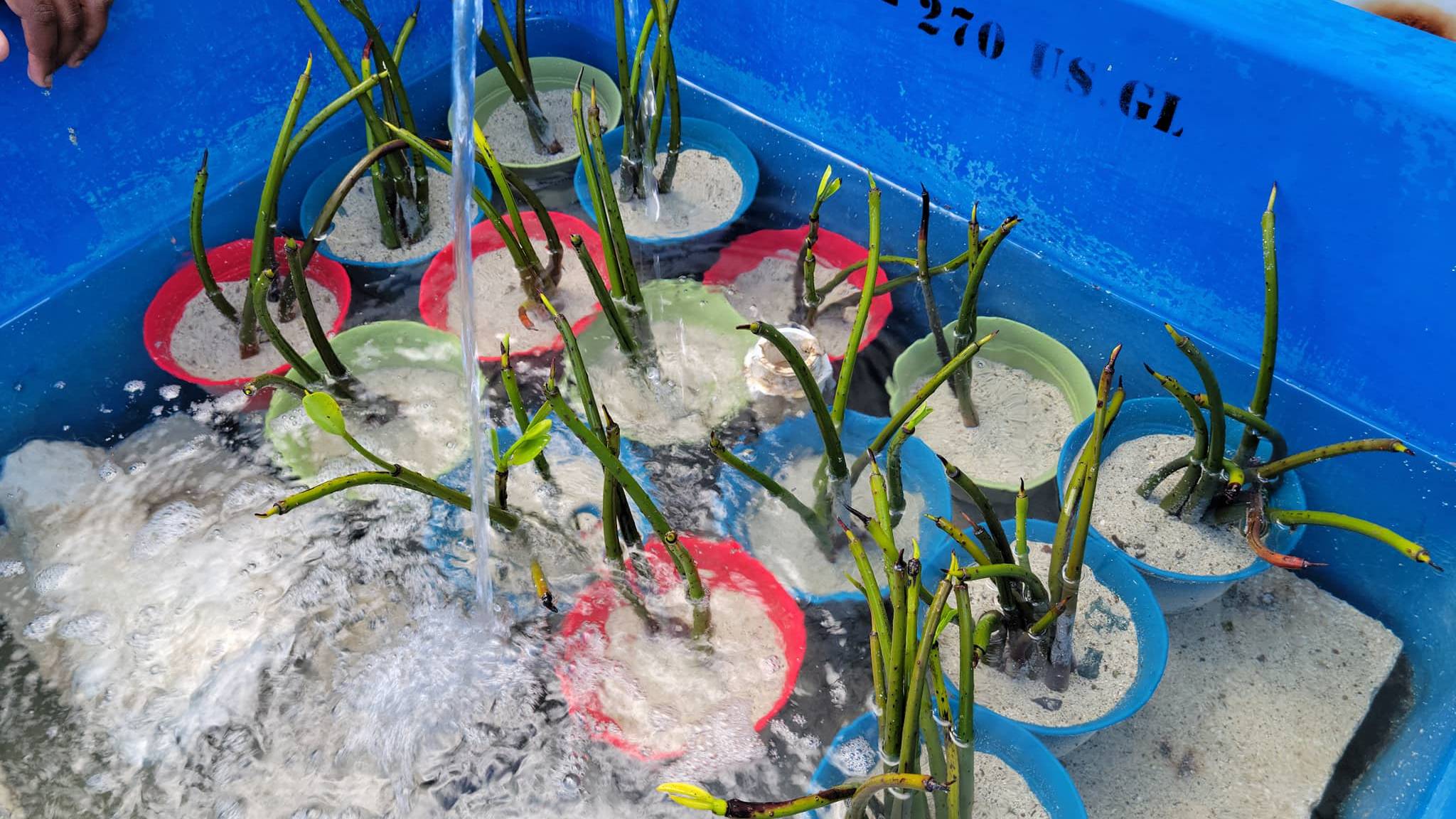
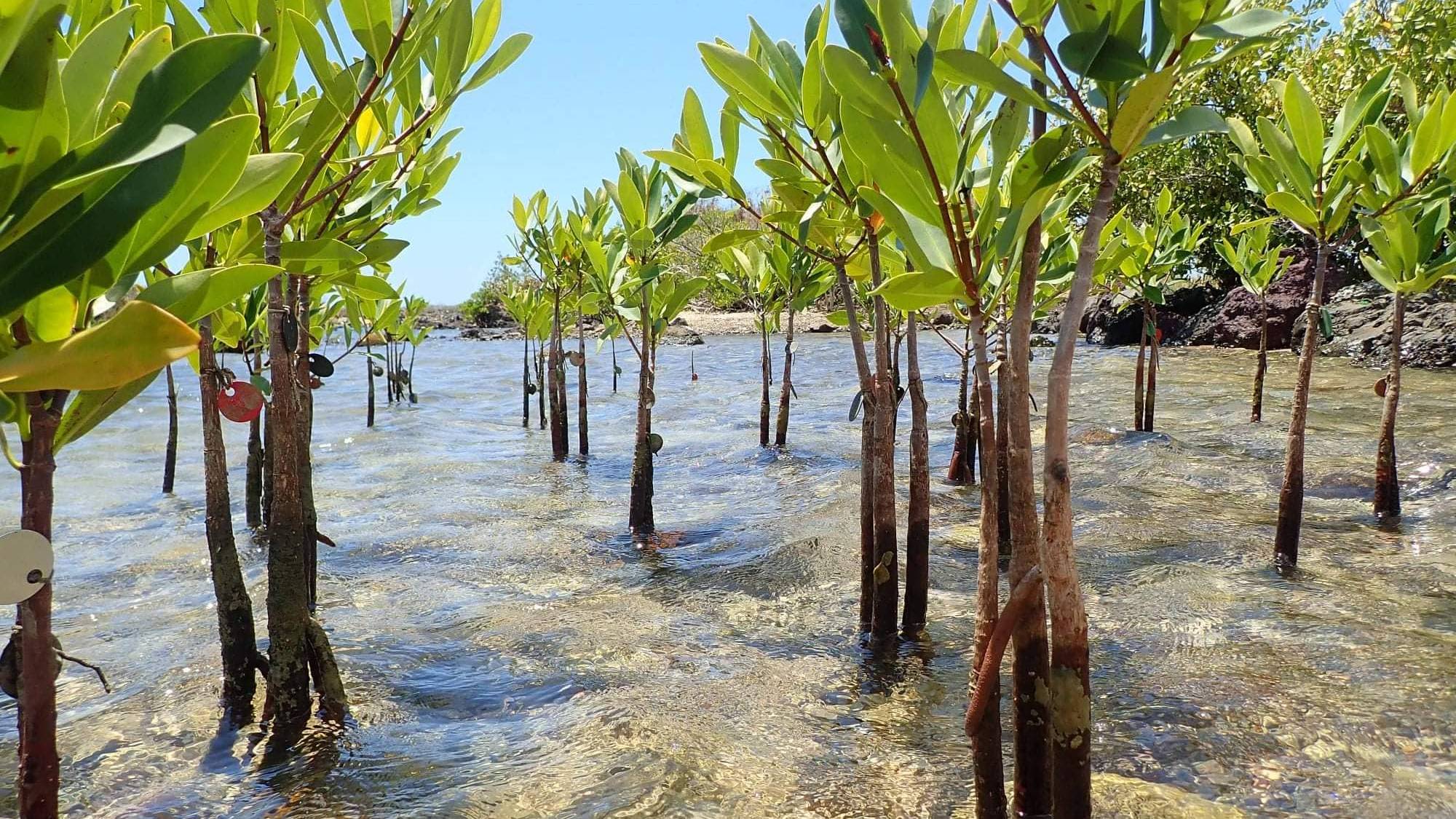
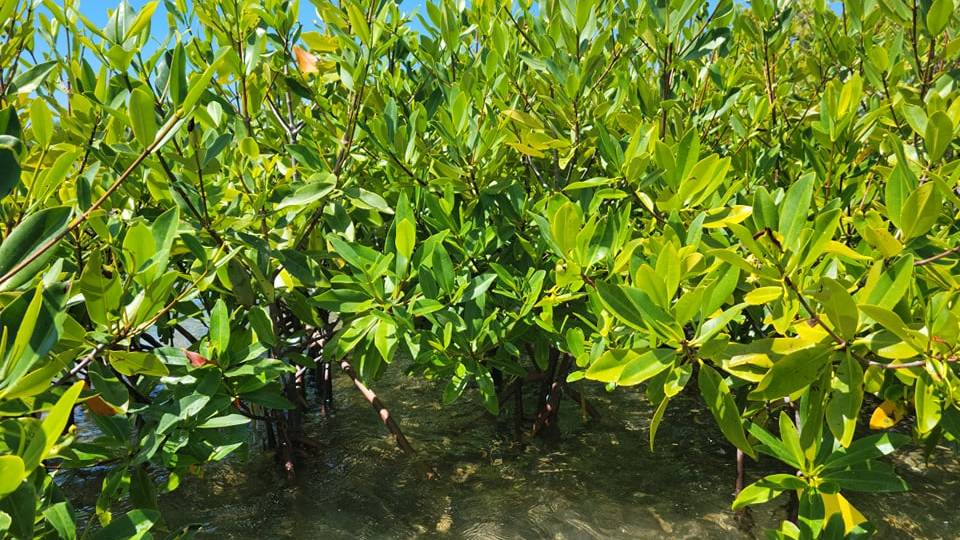
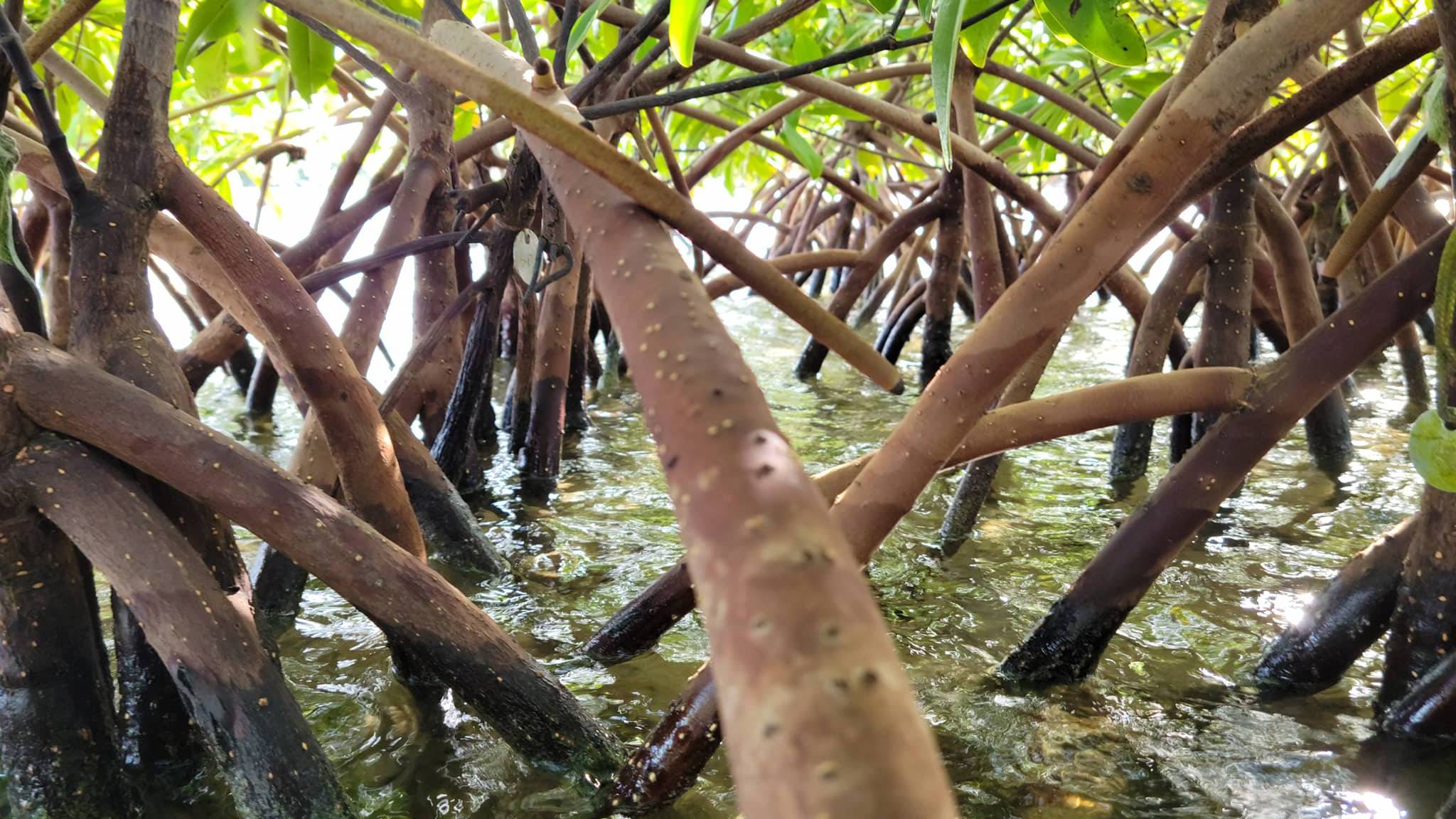
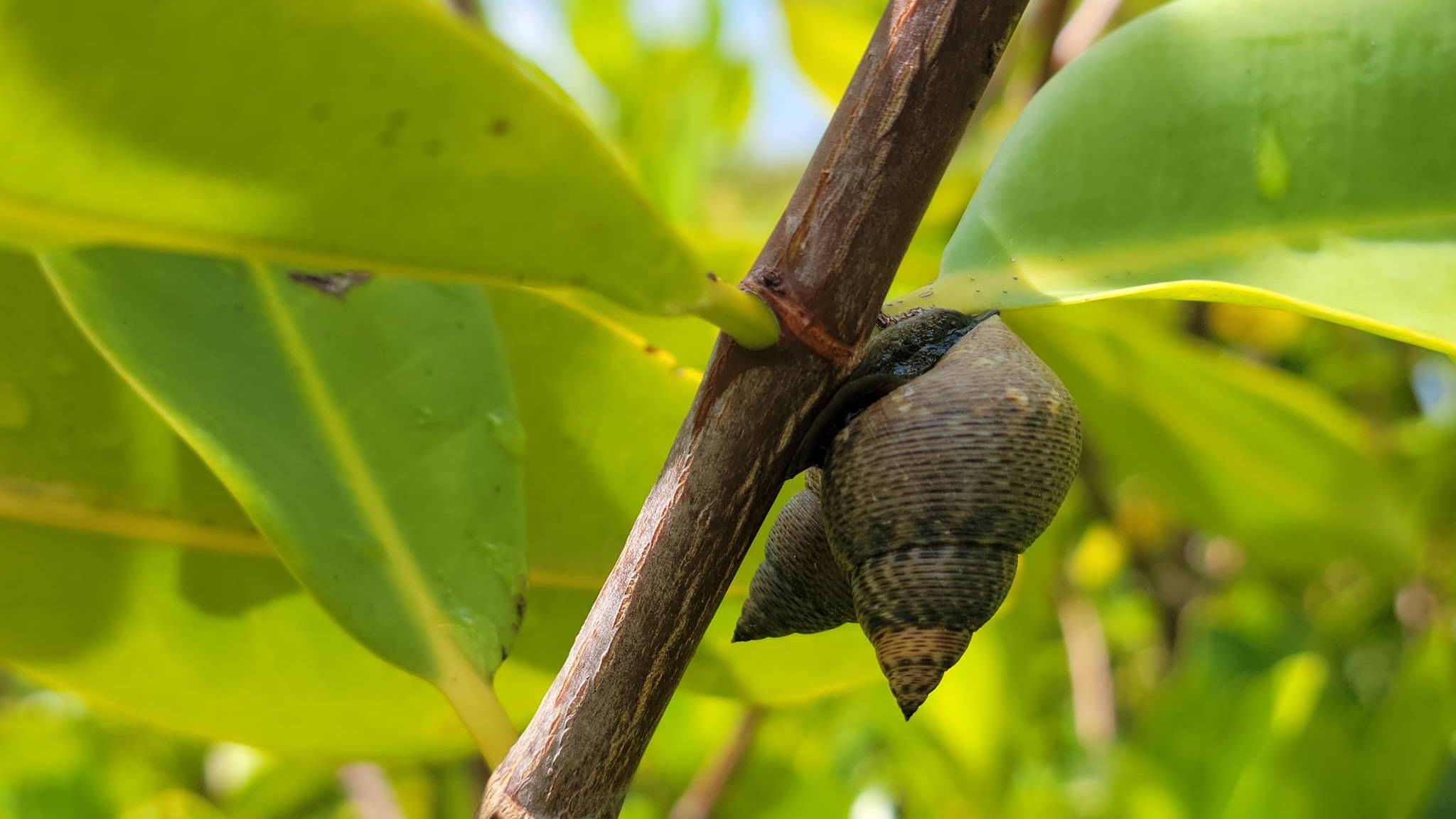
Our team uses a series of cameras to better document the variety of life living in and around the red mangroves. On a good day, above the water, we could see crabs, snails, egrets, herons and pelicans. Under the water, a combination of baitfish, schoolmaster snappers, damselfish, gobies, pufferfish, and mojaras could be seen swimming near the prop roots. Volunteers can help us either in the field or through our Mangrove SPY USVI project with better documenting/recording what types of wildlife are living in these mangroves at that time.
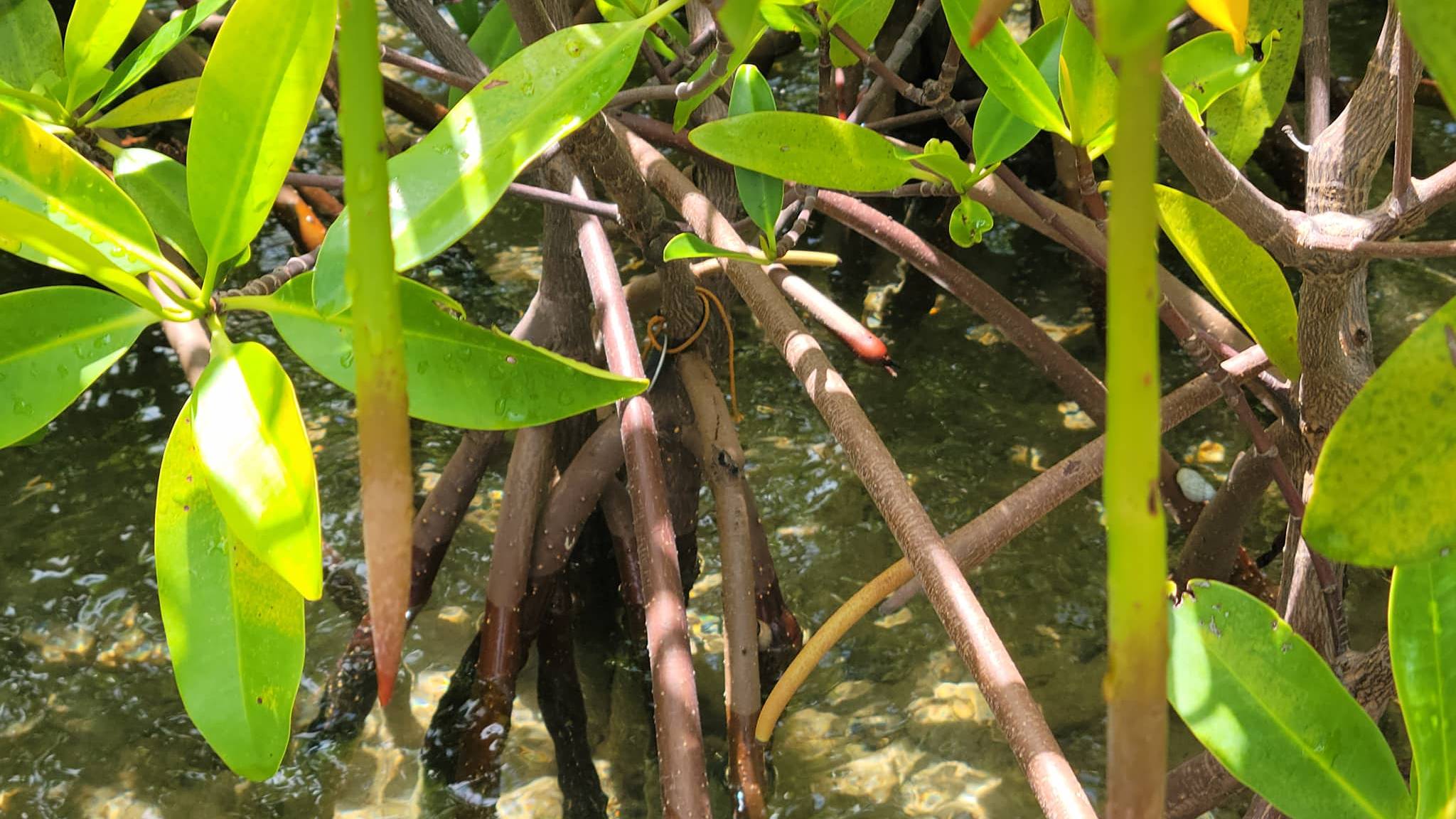
Red mangrove propagules (left and right). These slender pods, which are heaviest at the bottom (brown portion) and lightest at the top (green portion) are what will eventually become a red mangrove tree. They will naturally fall from their parent tree and drift along the water's surface until rooting in the nearby substrate (soil / sand).
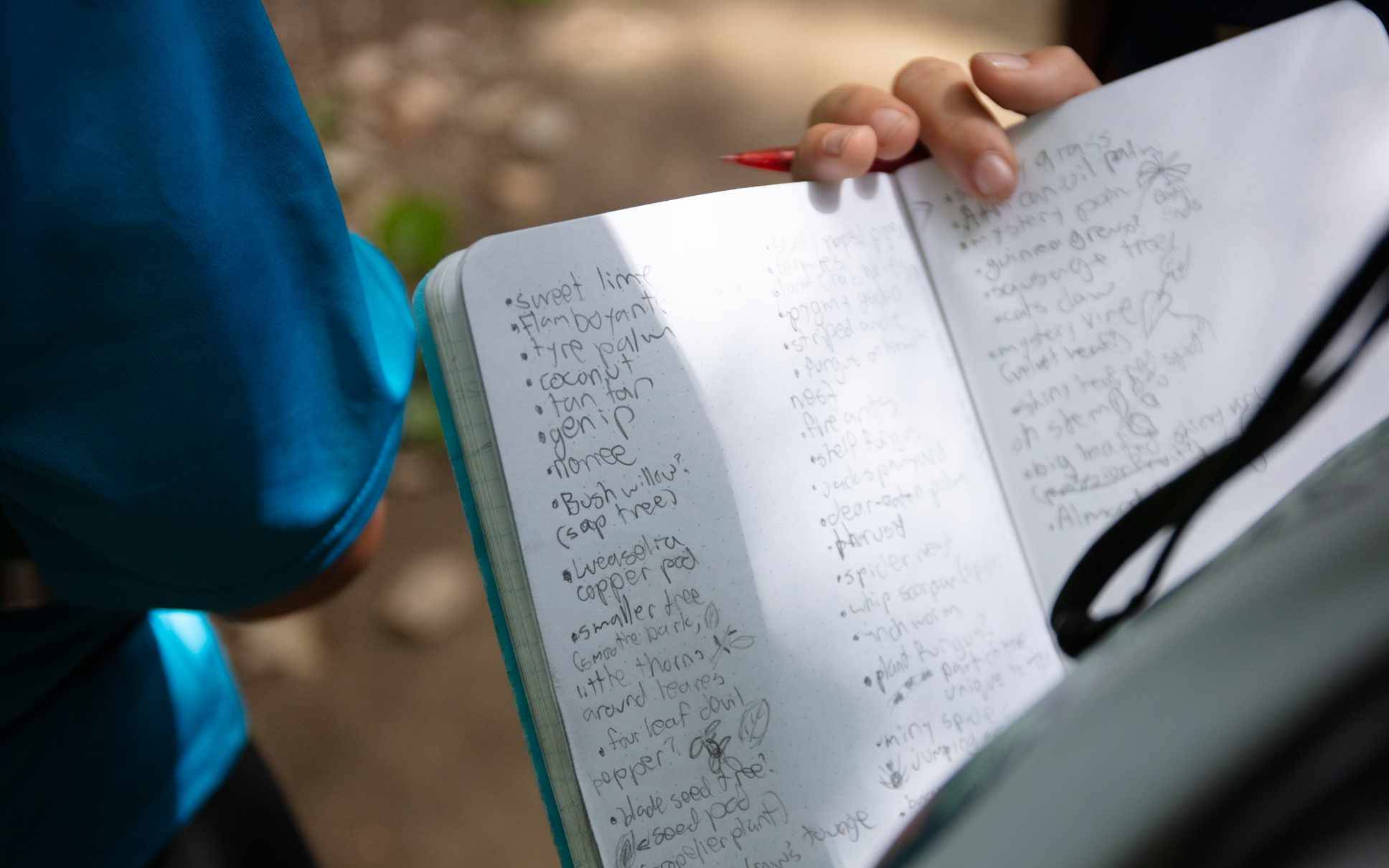

Barracuda are a slender bodied, silver-colored fish that have sharp teeth, often giving them a very menacing appearance. As juveniles (babies), they have brown spots on their body which they lose as they mature. They can often be seen by themselves in the background waiting for unsuspecting prey to swim by.
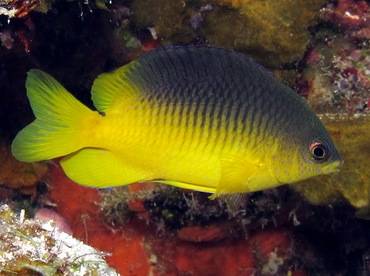
Damselffish have an oval-shaped body and are considered to be somewhat territorial; defending their patches of algae. In the USVI, we have several species of damselfsh which do change colors as they mature; some species are mostly brown in color whereas some have a bi-color appearance like the one shown in the image.
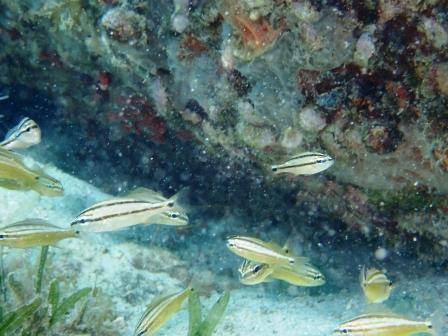
French grunts are a common fish found in Caribbean waters that are earn their name from the iconin grunting noise they make. Juvenile or baby french grunts have several dark stripes that run across the lenth of their body; as they mature, they lose these stripes and develop a more pronounced yellow color with some blue speckles.
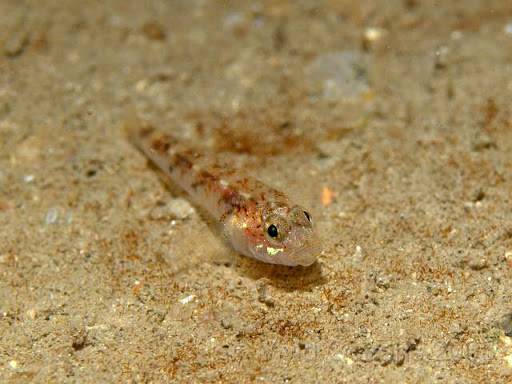
Gobies are slendered bodied fish that are often found resting on the sea floor or on the surfaces of rocks. They may sometimes have the appearance as though they are walking on the sea floor with the use of their fins.
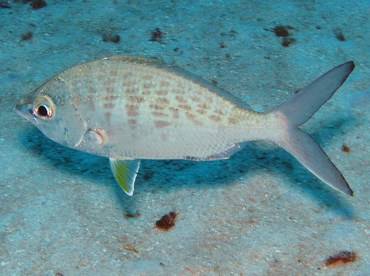
Mojarra are silver bodied fish typically found on reefs, seagrasses, and areas with mangroves. These also have several faint colored bars along the sides of their body.
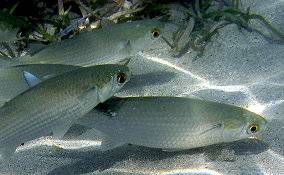
There are many different species of mullet, some found in both fresh and salt water environments. Mullet seen in our mangrove sites are typically silver in color and usually tend to form small schools in the shallow water where they reside.
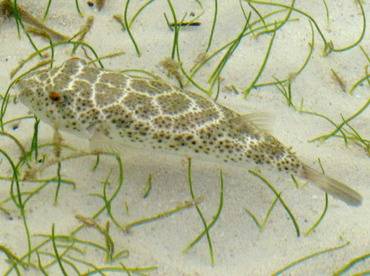
Checkered pufferfish are often seen in segrass beds as well as in areas with mangroves. A checkered pattern can be seen on their dorsal (top) surface. These fish may be solitary or in a pair and feed primarily on snails and other shelled marine animals which they can pry open with their beak.
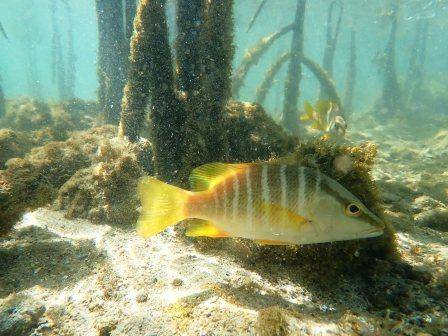
Schoolmaster snapper have a pointed snout and large mouths. In their juvenile phase, they have several vertical colored bars that run the length of their body; these bars usually disappear as they mature.
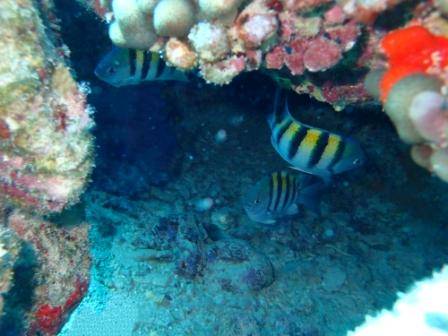 Sergeant majors are a species of damselfish which have a signature oval-shaped body
with a yellow highlight on their upper body with sveral black vertical bars, extending
from mid-body to the length of its tail. They can often be seen in groups
Sergeant majors are a species of damselfish which have a signature oval-shaped body
with a yellow highlight on their upper body with sveral black vertical bars, extending
from mid-body to the length of its tail. They can often be seen in groups
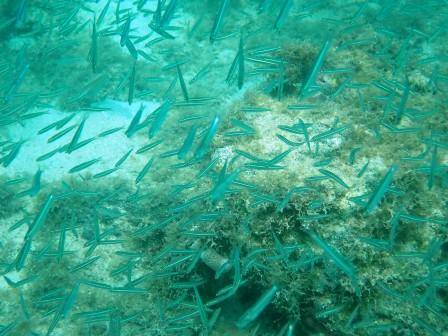
| Phone | Social Media | |
|---|---|---|
| 340-693-1674 | howard.forbes@uvi.edu |